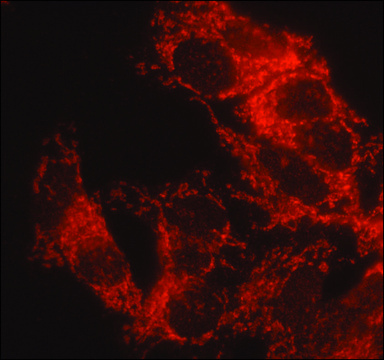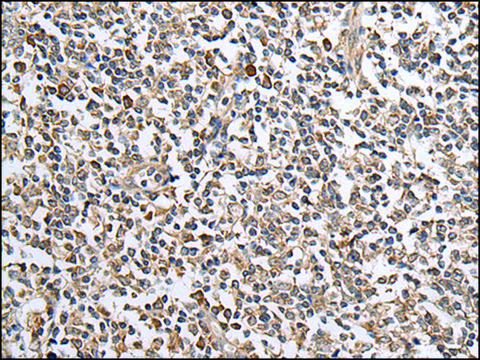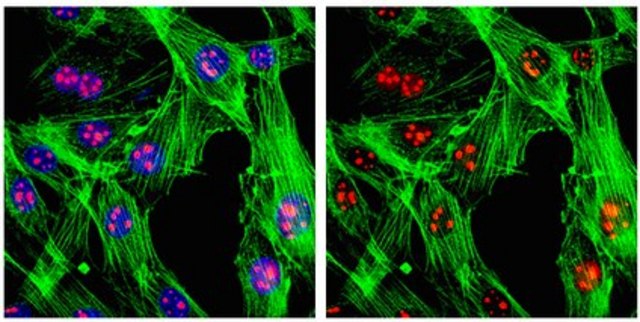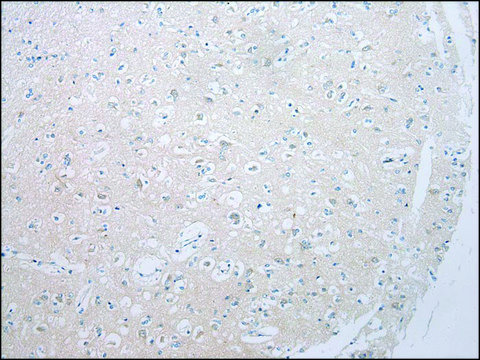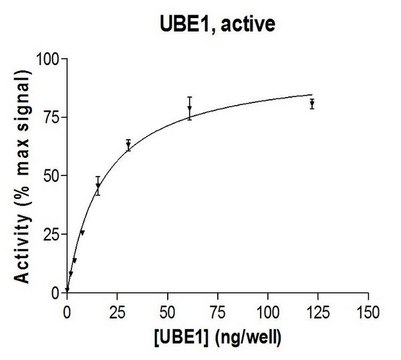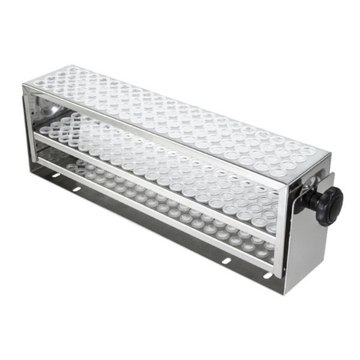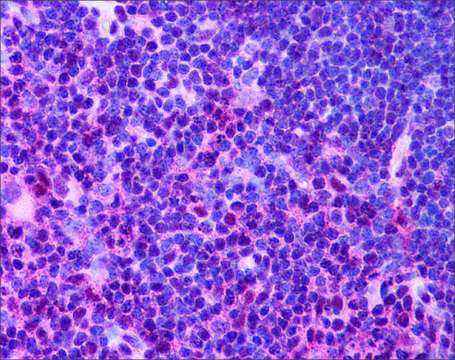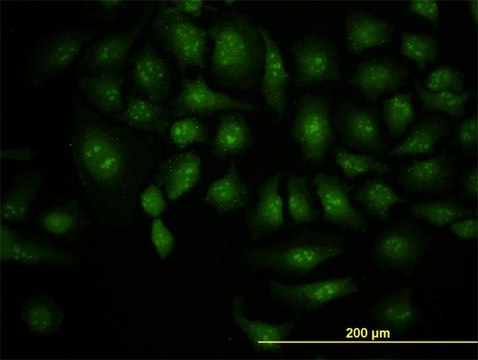SAB4200328
Anti-acetyl-Histone H3 [Ac-Lys56]
IgG fraction of antiserum
Sign Into View Organizational & Contract Pricing
All Photos(2)
Synonym(s):
Anti-H3.4, Anti-H3/g, Anti-H3FT, Anti-H3K56ac, Anti-H3t, Anti-HIST3H3
UNSPSC Code:
12352203
Recommended Products
conjugate
unconjugated
antibody form
IgG fraction of antiserum
antibody product type
primary antibodies
clone
polyclonal
form
buffered aqueous solution
mol wt
antigen ~15 kDa
species reactivity
rat, human, mouse
technique(s)
western blot: 1:1000-1:2000 using NIH3T3 or HeLa cell lysates
UniProt accession no.
shipped in
dry ice
storage temp.
−20°C
target post-translational modification
acetylation (Lys56)
Gene Information
human ... HIST3H3(8290)
General description
Histones are considered as the important constituents of chromatin. They are classified into core histones and linker histones. Histone H3 gene codes for a H3 protein sequence. This H3 gene is located on human chromosome 1 (1q42).
Immunogen
synthetic peptide containing acetylated Lys56 of human histone H3, conjugated to KLH. The corresponding sequence is identical in many species including rat and mouse histone H3.
Application
Anti-acetyl-Histone H3 [Ac-Lys56] has been used in western blot analysis.
Biochem/physiol Actions
Core histones and linker histones are known possesses inter and intra-specific amino acid sequence variability. Histone modifications are thought to play an important role in cancer and disease. Histones H3 and H4 are the predominant histones subjected to extensive covalent modifications. In human embryonic stem cells, histone H3 Lys56 acetylation is associated to the core transcriptional network.
Physical form
Solution in 0.01 M phosphate buffered saline, pH 7.4, containing 15 mM sodium azide.
Disclaimer
Unless otherwise stated in our catalog or other company documentation accompanying the product(s), our products are intended for research use only and are not to be used for any other purpose, which includes but is not limited to, unauthorized commercial uses, in vitro diagnostic uses, ex vivo or in vivo therapeutic uses or any type of consumption or application to humans or animals.
Flash Point(F)
Not applicable
Flash Point(C)
Not applicable
Regulatory Information
新产品
Certificates of Analysis (COA)
Search for Certificates of Analysis (COA) by entering the products Lot/Batch Number. Lot and Batch Numbers can be found on a product’s label following the words ‘Lot’ or ‘Batch’.
Already Own This Product?
Find documentation for the products that you have recently purchased in the Document Library.
A solitary human H3 histone gene on chromosome 1
Albig W, et al.
Human Genetics, 97(4), 486-491 (1996)
Depletion of cellular iron by curcumin leads to alteration in histone acetylation and degradation of Sml1p in Saccharomyces cerevisiae
Azad GK, et al.
PLoS ONE, 8(3), e59003-e59003 (2013)
Histone h3 lysine 56 acetylation is linked to the core transcriptional network in human embryonic stem cells
Xie W, et al.
Molecular Cell, 33(4), 417-427 (2009)
Histone Variants: Signaling or Structural Modules
Handbook of Cell Signaling, 2409-2425 (2010)
William F Marzluff et al.
Genomics, 80(5), 487-498 (2002-11-01)
The multigene family encoding the five classes of replication-dependent histones has been identified from the human and mouse genome sequence. The large cluster of histone genes, HIST1, on human chromosome 6 (6p21-p22) contains 55 histone genes, and Hist1 on mouse
Our team of scientists has experience in all areas of research including Life Science, Material Science, Chemical Synthesis, Chromatography, Analytical and many others.
Contact Technical Service